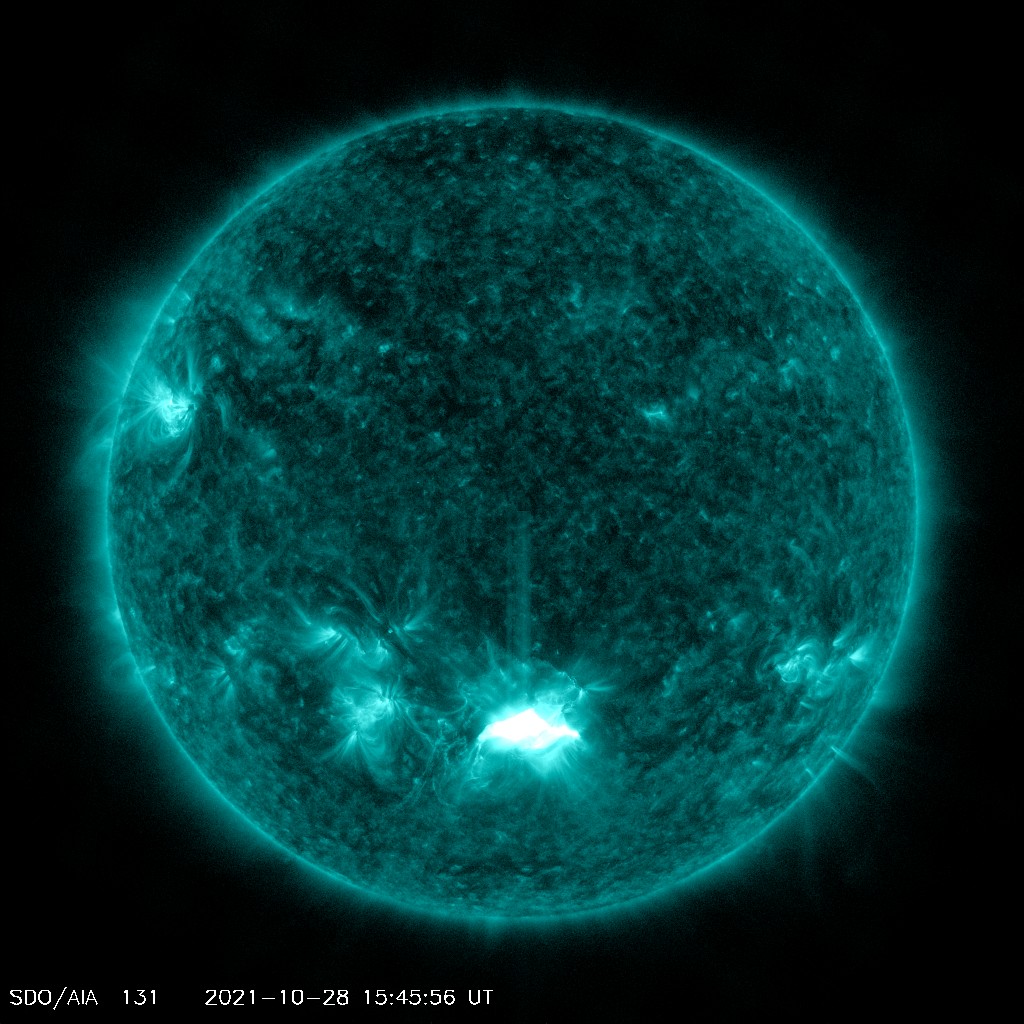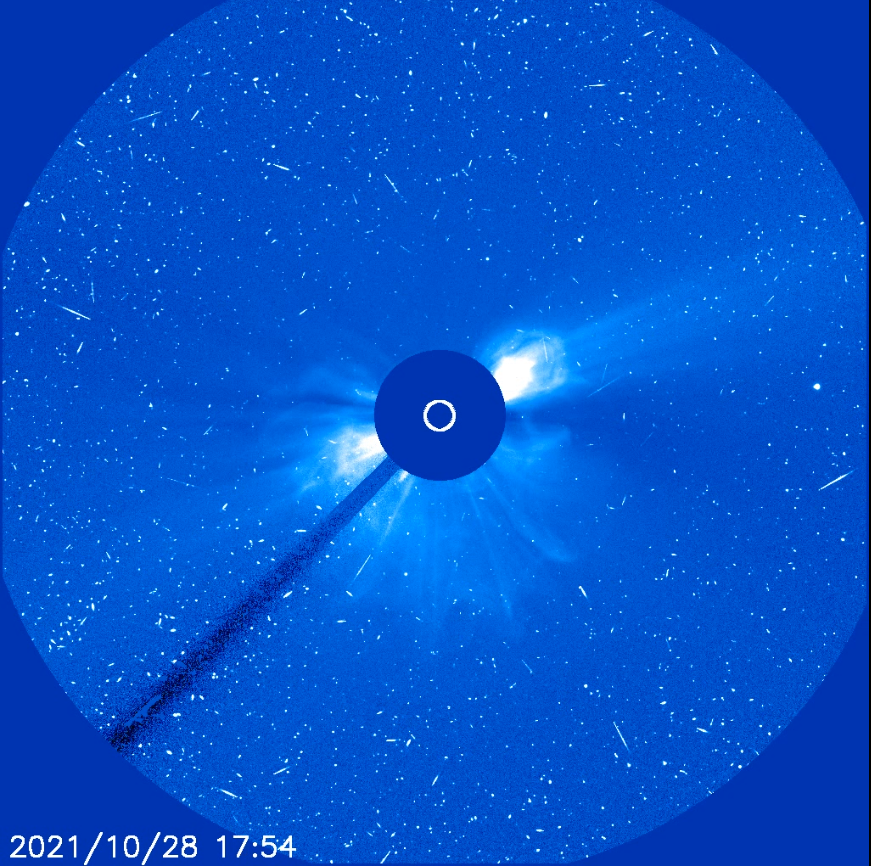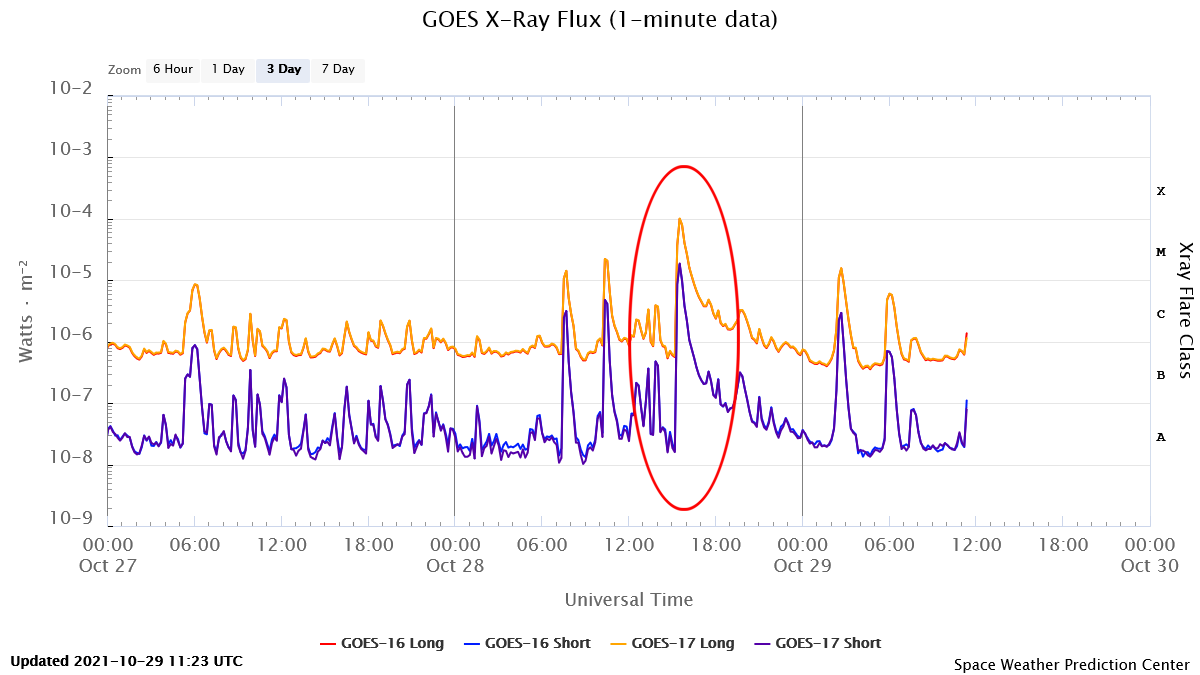Space Weather Alert - 29th October 2021
What Has Happened?
An X1.0 solar flare and associated coronal mass ejection (CME) was observed on October 28th from active region 12887 which is centrally located in the southern hemisphere of the solar disk. This CME has a significant Earth-directed component and is expected to arrive late on Saturday 30th or early on Sunday 31st October.
Geomagnetic activity will be enhanced in response to the CME arrival and STORM conditions are anticipated throughout the remainder of the weekend, peaking at STORM G3 levels late on Saturday or into Sunday and averaging minor storm (STORM G1) overall.
Assuming clear dark skies, and that the geomagnetic field is suitably disturbed, there is an increased chance of seeing the aurora. In the UK, those in Scotland, northern England and Northern Ireland may have the best opportunities.
Sign-up to receive Geomagnetic Disturbance Alert emails.
Follow us on Twitter:
Follow @BGSauroraAlert for more occasional aurora alerts.
Follow @BGSspaceWeather for daily space weather forecasts.
Glossary
- BGS
- The British Geological Survey is part of UK Research and Innovation (UKRI) and is one of the Natural Environment Research Council's Research Centres.
- CME or Coronal Mass Ejection
- The eruption of a portion of the outer atmosphere of the Sun into space, caused by rapid changes in its magnetic field. Often occurs along with a solar flare.
- Solar Flare
- Energy released by the explosive reorganisation of magnetic fields within the Sun's atmosphere.
- Solar Wind
- The ever-present expansion of the Sun’s hot outer atmosphere into the solar system, which carries space weather within it.
- Sunspot/Active Region
- A region of intense magnetic field in the Sun's visible outer atmosphere often associated with flares and CMEs.




